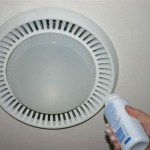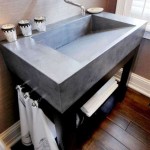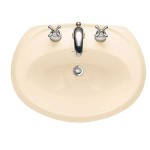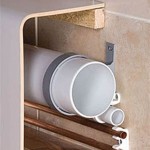Removing a Bathroom Vanity Top Glued To Wall: A Comprehensive Guide
Removing a bathroom vanity top that has been glued to the wall can be a challenging task, often requiring patience and careful execution to avoid damage to the surrounding surfaces. The adhesive used, typically construction adhesive or silicone caulk, provides a strong bond that needs to be effectively broken without causing significant damage to the wall, vanity cabinet, or the countertop itself. This article provides a detailed guide on how to safely and effectively remove a glued-on vanity top, covering essential tools, methods, and preventative measures.
The process necessitates a thoughtful approach, starting with understanding the type of adhesive used and the construction of both the vanity top and the wall. Factors such as the wall material (drywall, tile, plaster) and the countertop material (laminate, granite, marble, solid surface) will influence the chosen removal techniques. Rushing the process could result in chipped tiles, torn drywall paper, or even a broken countertop, leading to more extensive and costly repairs.
Assessing the Situation and Gathering Tools
Before commencing the removal, a thorough assessment of the situation is crucial. This involves identifying the type of adhesive used, examining the points of adhesion, and determining the material composition of both the vanity top and the wall. Knowing the adhesive type will help in selecting appropriate solvents or release agents. Similarly, understanding the wall material will influence the level of care required to prevent damage. For example, removing a vanity top from a tiled wall will require a different approach than removing it from a drywall surface.
The following tools are typically required for removing a bathroom vanity top glued to the wall:
*Utility Knife:
For scoring caulk lines and breaking initial adhesive bonds. Ensure the blade is sharp for clean cuts. *Putty Knife or Scraper:
For gently prying and separating the vanity top from the wall. A flexible putty knife is often preferred for minimizing damage. *Oscillating Multi-Tool with Scraper Attachment:
This tool can be very effective in cutting through adhesive, particularly construction adhesive. The scraper attachment allows for precise and controlled removal. *Heat Gun or Hair Dryer:
Heat can soften some adhesives, making them easier to separate. *Solvent or Adhesive Remover:
Options include mineral spirits, acetone (use with caution), or commercially available adhesive removers. Always test the solvent in an inconspicuous area first to ensure it doesn't damage the countertop or wall finish. *Hammer:
For gently tapping a putty knife or scraper to help break the adhesive bond. Use with caution to avoid causing damage. *Pry Bar (Small):
Use a small pry bar with care for leverage in areas where the adhesive bond is particularly strong. Ensure to protect the surrounding surfaces with a piece of wood or thin plastic sheeting. *Safety Glasses:
Protecting the eyes from debris and potential splashes of solvents is essential. *Gloves:
Protect hands from adhesives, solvents, and sharp tools. *Drop Cloths or Plastic Sheeting:
To protect the floor and surrounding areas from debris and spills. *Paint Scraper or Razor Blade (for cleaning):
To remove residual adhesive from the wall and vanity cabinet after the countertop has been removed. *Level:
To ensure the replacement vanity top is installed correctly. *Shims:
For leveling the new vanity top if necessary.Step-by-Step Removal Process
The removal process should be approached systematically, starting with the least aggressive methods. The following steps provide a detailed guide:
1.
Preparation:
Begin by clearing the area around the vanity. Remove any items from the countertop and the vanity cabinet below. Cover the floor and surrounding areas with drop cloths or plastic sheeting to protect them from debris and spills.2.
Scoring the Caulk Lines:
Use a sharp utility knife to carefully score along the caulk lines where the vanity top meets the wall and the vanity cabinet. This step is crucial for preventing damage to the wall and cabinet surfaces. Make several passes with the knife, applying firm pressure to ensure the caulk is completely cut through.3.
Softening the Adhesive (Optional):
If the adhesive is known to be heat-sensitive, use a heat gun or hair dryer to gently warm the areas where the vanity top is attached to the wall. This can help soften the adhesive and make it easier to separate. Be cautious not to overheat the surface, as this could damage the countertop or wall finish.4.
Prying and Separating:
Starting at one corner, carefully insert a putty knife or scraper between the vanity top and the wall. Gently tap the handle of the putty knife with a hammer to help it penetrate the adhesive bond. Work slowly and methodically, moving the putty knife along the length of the vanity top, gradually separating it from the wall. If resistance is encountered, try applying more heat or solvent to the area.5.
Using an Oscillating Multi-Tool (If Necessary):
If the putty knife is not effective, an oscillating multi-tool with a scraper attachment can be used. Carefully position the scraper blade between the vanity top and the wall and turn on the tool. Move the tool slowly and steadily along the adhesive line, allowing the scraper to cut through the adhesive. Be careful not to apply too much pressure, as this could damage the wall or countertop.6.
Applying Solvent (If Necessary):
If the adhesive remains stubborn, apply a solvent or adhesive remover to the areas where the vanity top is still attached to the wall. Follow the manufacturer's instructions for the solvent, and allow it to sit for the recommended time. This will help soften the adhesive and make it easier to separate. Test the solvent in an inconspicuous area first to ensure it doesn't damage the countertop or wall finish.7.
Final Separation:
Once the adhesive has been sufficiently softened or cut through, carefully lift the vanity top away from the wall. If the vanity top is heavy, have a helper assist with lifting to prevent accidental drops or injuries.8.
Removing Residual Adhesive:
After the vanity top has been removed, use a paint scraper or razor blade to carefully remove any residual adhesive from the wall and vanity cabinet. Apply solvent to soften the adhesive if necessary. Be careful not to damage the underlying surface.Dealing with Difficult Adhesive and Damage Mitigation
Sometimes, the adhesive used is extremely strong, or the process has resulted in some damage to the wall. Here's how to address these challenges:
1.
Persistent Adhesive:
For exceptionally stubborn adhesives, consider using a specialized adhesive remover designed for construction adhesive. These removers often contain stronger solvents and may require longer dwell times. Follow the manufacturer's instructions carefully and ensure adequate ventilation.2.
Drywall Damage:
If the drywall paper has been torn during the removal process, it will need to be repaired before repainting. Use joint compound to patch the damaged areas, sand smooth, and prime before painting.3.
Tile Damage:
If tiles have been chipped or cracked, they will need to be replaced. Carefully remove the damaged tiles using a grout saw and chisel, and then install new tiles using thin-set mortar and grout.4.
Countertop Considerations:
Older countertops may be brittle and prone to cracking. Exercise extreme caution when prying or applying force to avoid breaking the countertop. If the countertop is particularly valuable or fragile, consider hiring a professional to remove it.5.
Prevention:
Before installing the new vanity top, thoroughly clean and inspect the wall and vanity cabinet. Ensure that the surfaces are clean, dry, and free of any debris or old adhesive. When installing the new vanity top, consider using a less permanent adhesive, such as silicone caulk, which will provide a strong bond but will be easier to remove in the future. Alternatively, consider using mounting brackets or clips to secure the vanity top to the wall instead of relying solely on adhesive.By following these steps and taking appropriate precautions, the removal of a bathroom vanity top glued to the wall can be achieved successfully, minimizing the risk of damage and ensuring a smooth transition to the installation of a new vanity top.
:max_bytes(150000):strip_icc()/7_remove-vanity-top-56a4a26d3df78cf772835b2d.jpg?strip=all)
How To Remove A Bathroom Vanity Cabinet
:max_bytes(150000):strip_icc()/8_remove-sink-base-cabinet-56a4a26d3df78cf772835b30.jpg?strip=all)
How To Remove A Bathroom Vanity Cabinet

Removing The Side Splash Backsplash From Our Bathroom Sink Young House Love

How To Remove Replace A Vanity Top Easy Bathroom Sink Remodel

Removing The Side Splash Backsplash From Our Bathroom Sink Young House Love

How To Remove A Bathroom Vanity Remodel

How To Remove Your Bathroom Sink And Vanity Dumpsters Com

How To Install A Backsplash On Vanity Bowed Wall

Removing The Side Splash Backsplash From Our Bathroom Sink Young House Love

How To Remove A Bathroom Vanity Budget Dumpster
Related Posts







